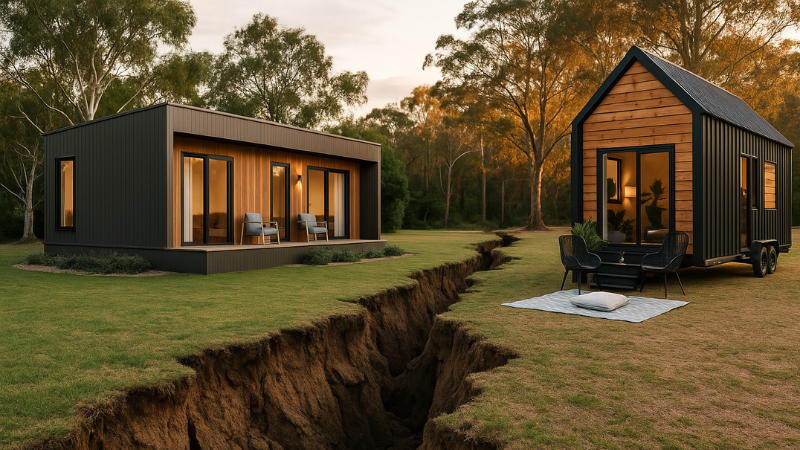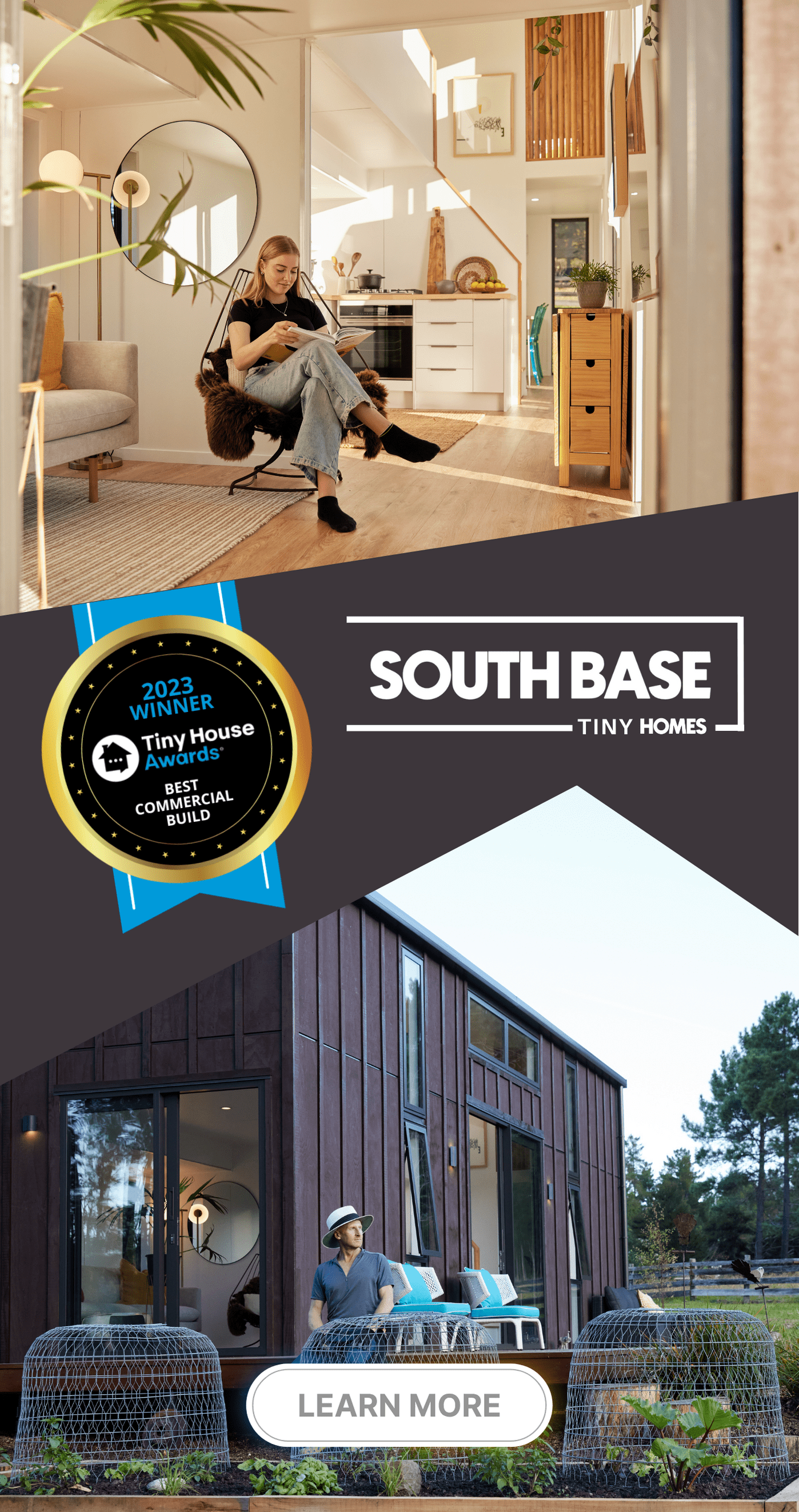New Zealand’s tiny house movement didn’t begin with rebellion. It began with reality.
People who couldn’t afford to buy a traditional home. People sick of handing over half their income to rent someone else’s. People locked out of the property market with little more than a toolbox, a spreadsheet, and the hope of a different future.
So they got creative.
They built small homes on wheels, not to travel, but to survive. It was the only legal workaround to avoid full building consent. They parked up quietly on leased land or a relative’s back paddock. It wasn’t easy. It wasn’t always legal. But it worked. Tiny homes became a lifeline for single parents, women over 45, retirees, and anyone trying to break the cycle of renting. For many, it wasn’t a final destination; it was a stepping stone. A way to live simply, save hard, and someday buy land of their own. I did exactly that. After years in a tiny home leasing land, I bought land, built a consented house, and now lease space on my land to two tiny home owners. It’s come full circle. But the next generation might not be able to follow the same path. Because in 2026, the rules are changing, and so is the shape of the movement.
What’s Changing?
New national reforms will require councils to allow a second dwelling of up to 70 square metres on most residential and rural-zoned properties without the need for building consent, provided certain criteria are met. What used to be called a granny flat is being reimagined as a legally recognised small home, no wheels, no red tape, and no need to navigate the full building consent process. It’s a long-overdue shift. But it also draws a clear line between two very different futures for tiny living in New Zealand.
One Movement, Two Tracks
Track one: For landowners.
They’ll be able to build fixed, consented, and financeable homes. These dwellings can be mortgaged, insured, and legally recognised, all without going through the usual building consent process. Builders are already pivoting. Designs are shifting. Banks are paying attention.
Track two: For those without land.
They’ll remain on wheels, often without formal leases or access to bank loans. They’ll keep navigating grey zones, with less visibility, less protection, and more risk.
The reforms don’t erase the wheeled tiny house model. But they do change the playing field. And not everyone will be able to move with it.
Who Gets Left Behind?
For those with land, or a generous family, the changes are a game-changer. They’ll gain equity. They’ll house loved ones. They’ll rent out small homes for extra income. But for those still shut out of land ownership, tiny living remains a workaround. Still necessary. Still powerful. But still sitting outside the system. And as more of the industry shifts toward consent-exempt, foundation-based homes, wheeled tiny homes risk being seen not as trailblazers, but as leftovers. That would be a mistake. Because the movement wasn’t born from lawlessness. It was born from need.
What Comes Next?
Soon, when someone says “tiny house,” they might picture a sleek 70m² home with a heat pump, a home loan, and a council sign-off, all achieved without a single building consent application. The homes on wheels will still be there. Tucked into fields and forest edges. Still housing real people. Still offering an alternative. But they may no longer be the face of the movement. What we’re witnessing now isn’t just a policy shift. It’s a split, between opportunity and necessity. Between who has land, and who doesn’t. And the real challenge ahead is making sure one path doesn’t erase the other. Because tiny living was never about being radical. It was about creating a way forward, when the old paths stopped working.


